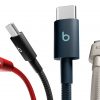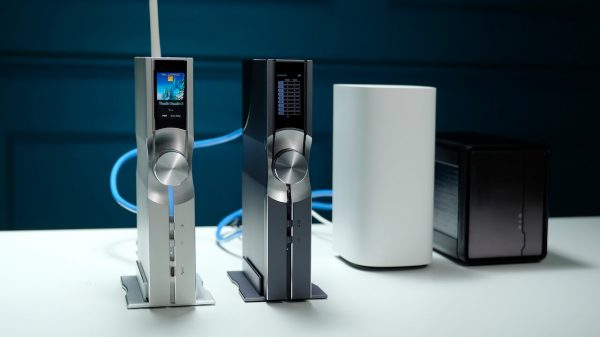Industry experts advise partners, companies and developers to preview Microsoft’s next operating system
Today Microsoft Corp. has reached a significant milestone with the Release Candidate (RC) of the highly anticipated Windows 7 operating system, now available for download to MSDN and TechNet subscribers at http://technet.microsoft.com. Broader public availability will begin May 5 on the Microsoft Download Center at http://microsoft.com/downloads. The RC milestone is a result of feedback from millions of customers and partners around the world. It indicates the operating system is entering the final phases of development and is ready for partners to develop new applications, device drivers and services, and ready for IT pros to evaluate Windows 7 and examine how it will operate in their environment.
“Listening to our partners and customers has been fundamental to the development of Windows 7,” said Bill Veghte, senior vice president for the Windows business at Microsoft. “We heard them and worked hard to deliver the highest quality Release Candidate in the history of Windows. We have more partner support than we’ve ever had for an RC and are pleased to say that the Windows 7 RC has hit the quality and compatibility bar for enterprises to start putting it through its paces and testing in earnest.”
Overall, Windows 7 has garnered strong industry support. According to an independent report from Forrester Research Inc.’s Ben Gray: “The beta of Windows 7 shows significant promise, and most IT operations professionals are looking forward to its availability and eventual enterprise deployment … start preparing for it now, and the best way to prepare for Windows 7 is by deploying Windows Vista. Short of that, begin testing your applications and hardware for compatibility against Windows Vista; it will pay off with greater compatibility with Windows 7.” (“Get Ready for Windows 7,” Forrester Research, April 2009.)
With Windows 7, customers will have access to the broadest array of software and hardware options the industry has to offer, and Microsoft is committed to delivering tools and support that enhance software compatibility as well as ease deployment and migration concerns for businesses and consumers alike. Customers also will benefit from the strong industry and partner support of Windows 7.
Strong Partner Support for Windows 7
More than 10,000 companies have signed up to have access to a breadth of helpful tools and resources needed to prepare their products and services to take full advantage of the innovations in Windows 7.
“With the upcoming introduction of Windows 7, Microsoft’s new operating system will redefine how people think about computing,” said Joe Roberts, executive vice president, Products for Corel Corp. “Drawing on our customer research, we’re building new creative consumer applications that take advantage of the solid performance and powerful touch capabilities Windows 7 offers to turn the typical user experience of mouse clicks and menus on its head — completely changing how users interact with Corel’s creative software.”
Windows 7 RC Reflects New Advancements
New to the Windows 7 RC are advancements such as Remote Media Streaming, Windows XP Mode (beta) and the upcoming beta of the Windows 7 Upgrade Advisor:
- Remote Media Streaming. Enables highly secure, remote Internet access to home-based digital media libraries from another Windows 7-based PC outside the home.
- Windows XP Mode. Utilizing Windows Virtual PC, Windows XP Mode allows Windows 7 users to run many Windows XP productivity applications, launched right from the Windows 7 desktop. Windows XP Mode will be available to Windows 7 Professional and Windows 7 Ultimate customers via download or, for the best experience, pre-installed directly on new PCs. As part of today’s announcement, Microsoft is releasing the beta of Windows XP Mode and Windows Virtual PC. For larger businesses where management is important to reduce the total cost of ownership, Microsoft Enterprise Desktop Virtualization (MED-V) within MDOP adds management to Windows Virtual PC including centralized policy, administration experience and deployment.
- Windows 7 Upgrade Advisor. To help enable a smooth transition, Windows 7 Upgrade Advisor will help people analyze their PCs in preparation for a Windows 7 upgrade. Available soon, Windows 7 Upgrade Advisor will be a downloadable tool that will help people determine their ability to upgrade from their Windows XP-based or Windows Vista-based PC to Windows 7.
In addition, a number of enhancements were made to existing features based on feedback from beta testers, including the following:
- Refined navigation. Several enhancements to the Windows taskbar, JumpLists and search make navigation and finding exactly what you want much easier.
- Internet Explorer 8. InPrivate browsing in Internet Explorer 8 prevents browsing history, temporary Internet files, form data, cookies, and usernames and passwords from being retained by the browser. With Windows 7, you can start an InPrivate session straight from the JumpList. You can also open a new tab from the JumpList.
- Windows Touch. Controlling the computer by touching a touch-enabled screen or monitor is a core Windows 7 user experience. Improvements in the RC include several Windows Touch updates, including the ability to drag, drop and select items with touch, even inside Web sites that scroll both horizontally and vertically.
System Requirements for Windows 7
With the RC, Microsoft is also providing guidance on the minimum system requirements for Windows 7, showing that Windows 7 will work on a broader array of hardware than any other release of Windows at launch:
- 1GHz or faster 32-bit (x86) or 64-bit (x64) processor
- 1 GB of RAM (32-bit)/2 GB of RAM (64-bit)
- 16 GB of available disk space (32-bit)/20 GB (64-bit)
- DirectX 9 graphics device with Windows Display Driver Model 1.0 or higher driver
Windows 7 Ready for IT Pros and Tech Enthusiasts to Preview
For enterprises, Windows 7 is designed to empower users to work from anywhere while providing enterprise IT the tools to manage security, compliance and data protection through an infrastructure that will drive down the cost of operations. IT professionals and small and medium-sized businesses will find that Microsoft is committed to delivering tools and support that enhance software compatibility as well as ease deployment and migration concerns. Some key features for IT professionals include the following:
- Direct Access. This feature enables IT managers to provide mobile users with reliable and security-enhanced access to corporate network resources when they are on the Internet, without having to initiate a VPN connection. It also allows servicing and updating of remote PCs, even when they are on the road. This helps ensure that all mobile PCs are always up to date, and Windows Powershell means IT pros can automate many standard tasks to help reduce helpdesk costs, minimize user disruption and ease PC management. Direct Access is delivered by Windows 7 with Windows Server 2008 R2.
- BranchCache. Delivered jointly by Windows 7 and Windows Server 2008 R2, this feature enables IT pros to decrease the time branch office users spend waiting to download files from remote servers by caching the previously accessed content locally in a branch’s network.
- BitLocker and BitLocker To Go. This helps ensure that sensitive data is protected across PCs and removable storage devices.
For those who are interested in previewing Windows 7 and experiencing the new features firsthand but are not TechNet or MSDN subscribers, the Windows 7 RC will be publicly available May 5 on the Microsoft Download Center. For customers who want to take advantage of Windows XP Mode and Windows Virtual PC, there will also be a download available on the site.























